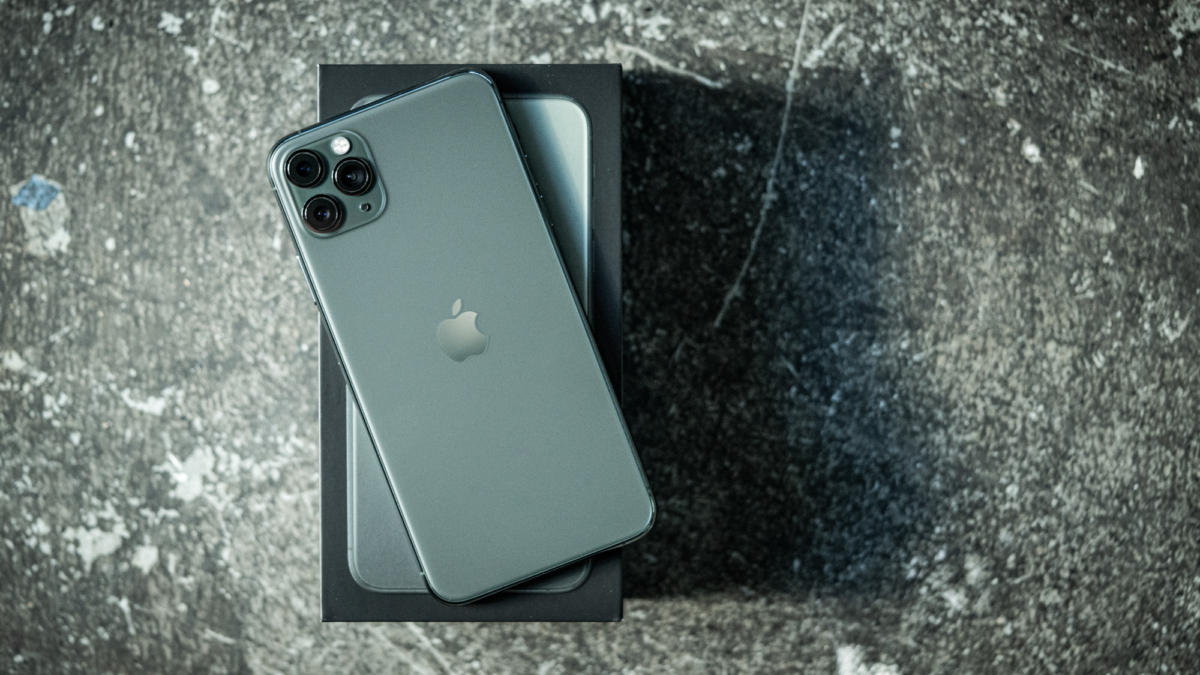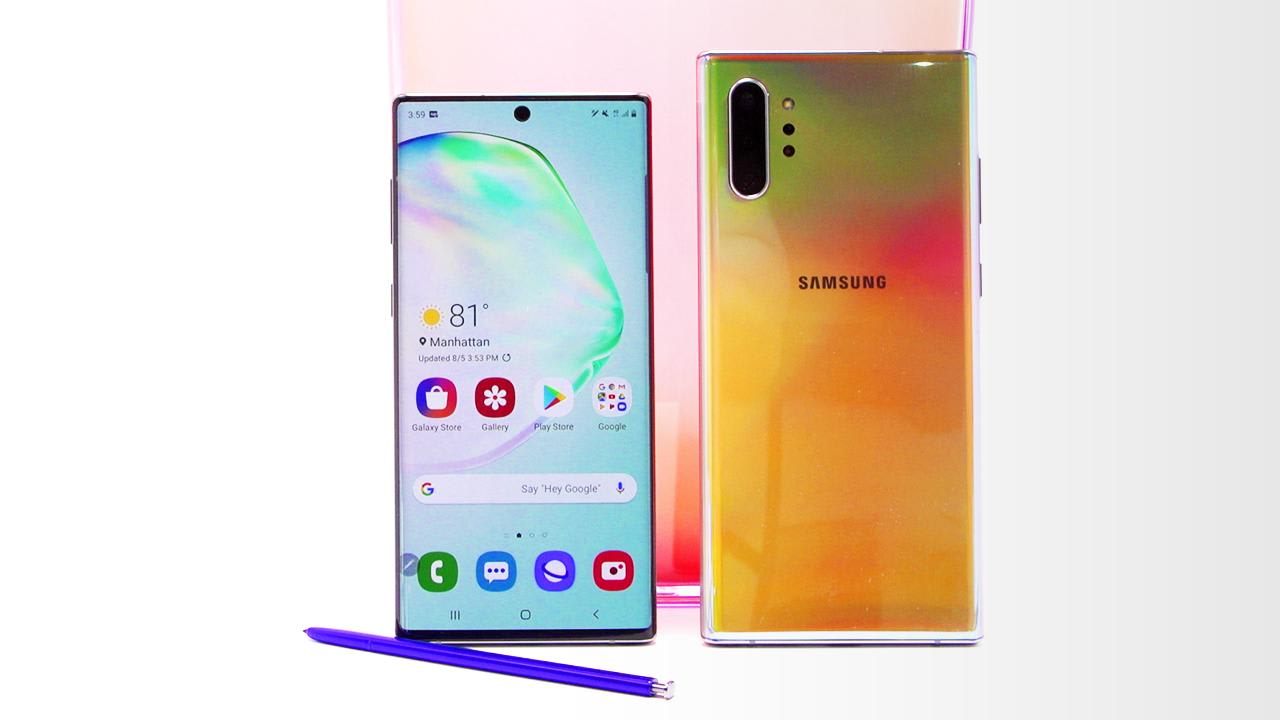Yearender 2019: From iPhone 11 Pro's weird-shaped premium camera to OnePlus 7 Pro's fluid screen

iPhone 11 Pro has emerged as the best phone of 2019 for those who love to do photography.
LAHORE (Dunya News) – 2019 has been a revolutionary year for the mobile phones as the world have witnessed the fluid OLED screen from OnePlus to awkward-looking best triple cameras of Apple.
Let’s take a look at few of the best phones launched in 2019.
1. iPhone 11 Pro
The iPhone 11 Pro delivers big performance in a compact package. You get triple rear cameras offer amazing performance, complete with an ultra-wide lens, a new "Night mode" and better Smart HDR called XDR, plus extended dynamic range in video.

The video recording, audio and super-bright XDR display are all tremendous, and the iPhone 11 Pro is also an absolute performance beast, with the new A13 Bionic chipset helping put it up there with the fastest phones we have reviewed. This is also the first 5.8-inch iPhone that doesn’t feel hamstrung by a battery that needs constant attention to get it through a full day.
Base price: US$999
Pros:
A lovely, supremely bright display
One of the best camera systems on any phone
Sizable battery upgrade
Cons:
Design hasn’t changed much and the notch remains annoying
64GB still the base storage option
A bit heavier and thicker than iPhone XS
2. OnePlus 7 Pro
The OnePlus 7 Pro is ready to take your portrait with its novel pop-up front-facing camera and then dazzle you with its silky-smooth, truly unblemished all-screen display – two features Apple and Samsung can’t claim with their market-leading flagship phones.

An upgrade deserving of the ‘Pro’ name: this smartphone has an immersive 6.67-inch screen that challenges Samsung’s display crown by ditching the ugly bezel outline and gaining a 90Hz refresh rate for a more fluid gaming and scrolling experience.
The second-gen in-screen fingerprint sensor has also been improved to help you more reliably access the phone the first time you press your thumb to the glass.
Underneath the HDR10+ screen are Qualcomm’s top-of-the-line Snapdragon 855 chipset, a hefty 4,000mAh battery that powered us through a day (but not any longer than that), and up to 256GB of storage and 12GB of RAM.
The OnePlus 7 Pro triple-lens rear camera array is spearheaded by a 48MP sensor, new 3x telephoto and ultra-wide lenses, and low-light-ready Nightscape mode.
Base price: $669
Pros:
Brilliant true all-screen display
Pop-up camera has wow factor
Fast performance and charging, 90Hz refresh
Cons:
Camera is good, but not great
No IP rating or Qi charging
No headphone jack
3. Samsung Galaxy Note10 Plus
The Note10 Plus is a massive Samsung phone with an equally sizable price that is quite a bit larger than the Galaxy Note 10. But it’s easy to fall in love with the screen and Aura Glow glass back if you’re into over-the-top smartphone opulence. It’s both class-leading and classy looking.

Screens at these sizes are begging for a stylus, and when we called the S10 Plus the "almost-everything-included Samsung phone" this is what we meant. But there has to be more than that, and the Note 10 Plus mostly delivers.
Its five cameras offer a ‘Live Focus’ portrait mode with fun-to-use filters. Although the Pixel 3 beats Samsung’s main cameras in low light, the selective black-and-white Color Point and Big Circles filters took our selfie game to the next level.
Base price: $1,099
Pros
Premium beautiful screen
Battery size
Great camera tools
Cons
No headphone jack
Supremely expensive
Big and slippery design
4. Google Pixel 4 XL
The Google Pixel 4 XL is a handsome phone in its simplicity that, by the same coin, feels less impressive than its Android flagship counterparts. It doesn’t help that its new standout features are inessential, and erratically functional. But new interface improvements and a camera suite that’s better in both the hardware and software departments ensure that this phone stands up to be counted, even if it doesn’t stand out from the competition.
![]()
The display now refreshes at 90Hz (in certain circumstances and at varying brightness levels) which gives it a much smoother look. It generally makes the whole phone feel snappier and we want this to be more common across loads of phones.
For the first time Google has added a secondary camera on the back, pairing a 12-megapixel wide-angle and 16-megapixel telephoto camera. These two sensors work together, improving everything from general picture quality to low-light shooting and zooming. Snaps from this phone are great and the added versatility of the new lens is welcome.
The software is great too, ditching pesky third-party apps for a clean install with the Google Assistant integrated pretty much everywhere. You’ll also be first in line to get new updates from Google.
One of the big new features this time around is the radar sensor. This lets you interact with the phone through gesture and it powers the face unlock functions.
Pros:
Excellent 90Hz OLED display
Clean and fluid software
Bold design and good build quality
Cons:
Poor battery life
Limited storage options
Radar is unreliable
Base price: $899
5. Huawei Mate 20 X
The Huawei Mate 20 X is a delight for big phone fans. It’s blazingly fast, crammed with tech and the battery can endure a full day of extensive use while the triple-lens camera produces stunning results. But its size makes it awkward to carry around and use practically on a daily basis, so while it’s great, it definitely isn’t for everyone.

If there’s one thing this phone excels at, it’s media consumption. It goes without saying that a big OLED panel will offer great visuals. Colours are vibrant and contrast is deep. Huawei has done a great job of ensuring the colour balance isn’t skewed one way or the other towards warm or cool (you can adapt for that in the software anyway, should you please), making for a well-balanced looking screen.
Yes, the Mate 20 X is a massive phone. But if you’re looking for a two-handed powerhouse to hold day in and day out, then this is a genuinely fantastic media device.
Overall, the only real downside to the Mate 20 X is what could be considered its upside: the large physical size. You’ll either struggle, or you’ll fall in love with it. For us, somewhat unexpectedly, it’s been a case of the latter. To top it all off, the Mate 20 X sports a spectacular camera suite that can take stunning photos and videos under any circumstance imaginable.
Pros:
Large screen
Fast performance
Long battery life
Cons:
It’s a huge phone
No waterproofing
Only Full HD+ resolution
Base price: $759
As revolutionary 2019 was for smartphones, everyone is looking forward to see what 2020 got in its pocket for phone lovers.
by Shaheer Shaz


